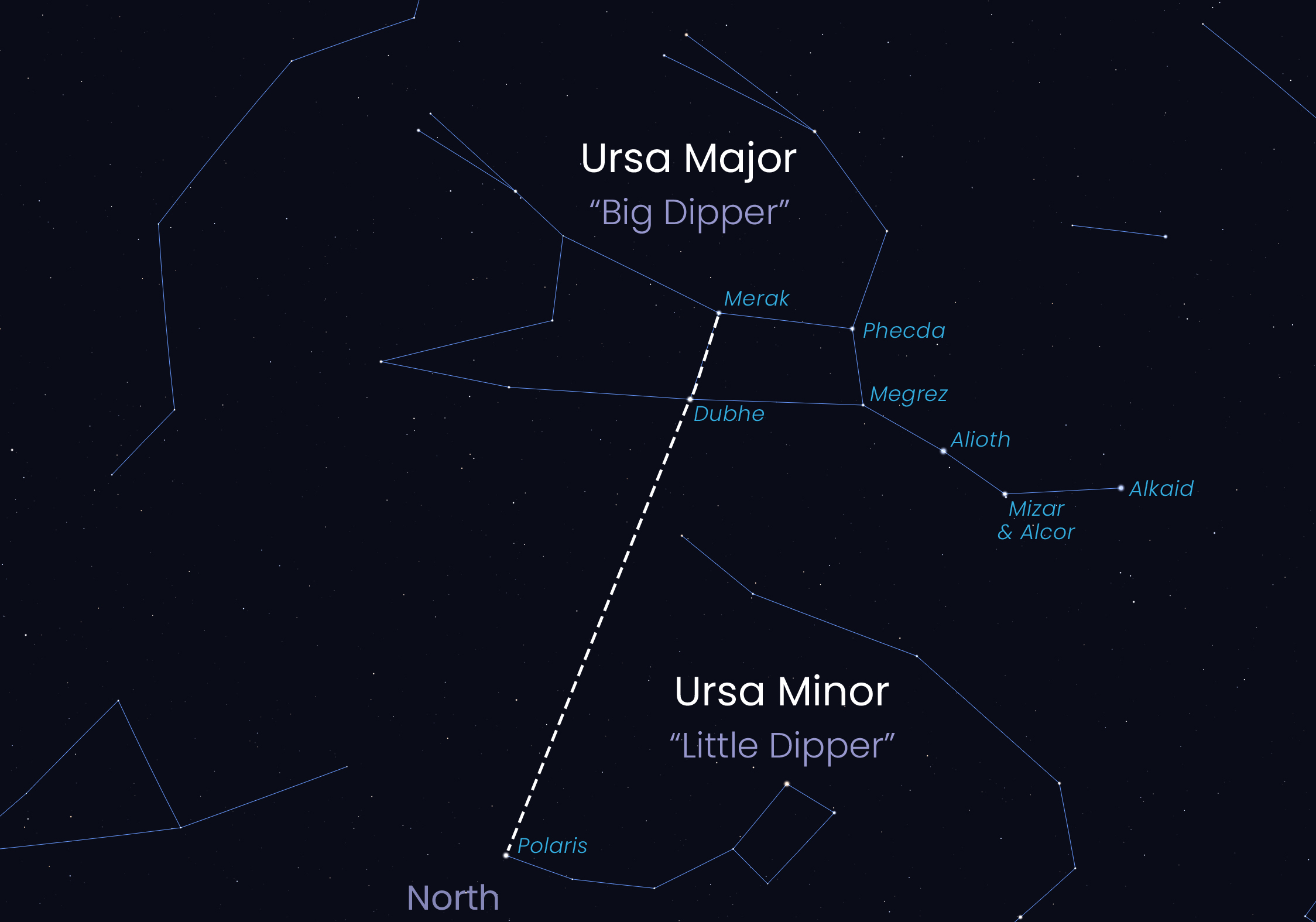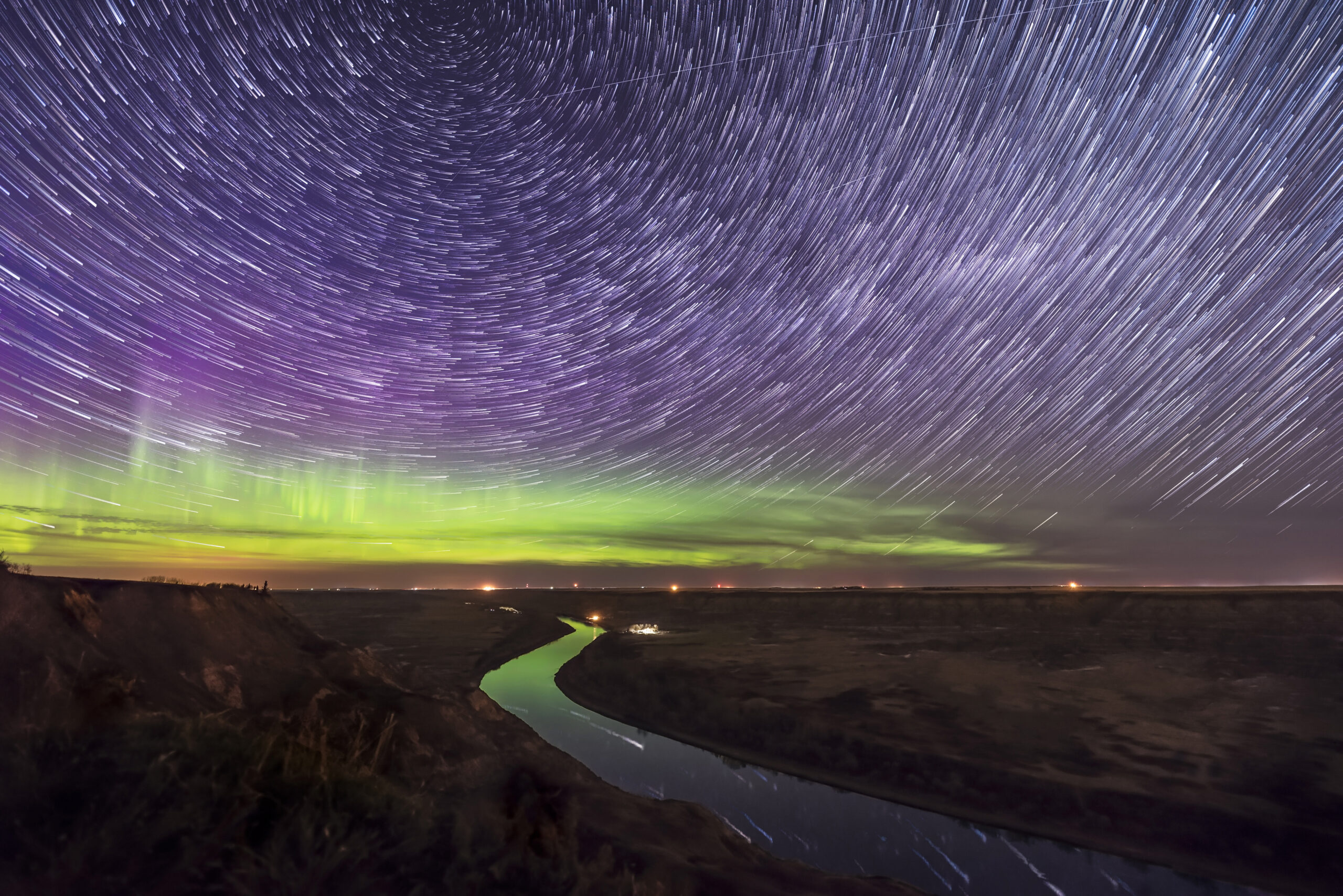Look up. There’s an entire universe in front of your eyes, shining in those little points of light.
Even through city haze, you can see objects that are trillions of kilometres away. There are our nearby neighbours—the Moon, the planets, meteors passing through our atmosphere, the occasional comet flying through the inner Solar System. Farther away, you can see stars, and if it’s dark enough, you can spot nebulae, clusters and even entire galaxies. It takes ages for those little photons of light to reach your eyeballs, so when you look at the night sky, you’re actually looking into the past. Space is unfathomably large, dangerously radioactive and unthinkably cold with scorching hot spots. There are black holes and white dwarfs, blue giants and even bigger red supergiants. While globular clusters contain some of the oldest stars in our 13-billion-year-old galaxy, a star’s core can collapse within minutes during a supernova. Anyway you look at it, space is mind blowing. To start trekking into its infinite depths, let’s go somewhere you have probably already visited.

I’m sure most of you recognize the Big Dipper, its seven prominent stars visible across Canada year-round. It looks like a big square spoon in the northern sky, and it’s actually a part of the constellation known as Ursa Major, “the Great Bear.” The Big Dipper is an asterism, a grouping of stars that isn’t a constellation on its own, and its stars hold different names and meanings in cultures all over the Northern Hemisphere. From the edge of the spoon to the tip of the handle, the stars in the Big Dipper have been officially dubbed by the International Astronomical Union as Dubhe, Merak, Phecda, Megrez, Alioth, Mizar and Alkaid, names that derived from Arabic.
Take a look at the second star from the end of the handle. Here’s where it gets interesting: there are actually two points of light there. It’s an age-old seeing test, trying to spot them both. Mizar is the brighter of the stars, and Alcor is about one light-year—9.46 trillion kilometres—behind it. That’s not all. Mizar is actually a quadruple star system. In it, there are two sets of tightly-bound binary star systems, tied together by gravity. In 2009, Alcor was also discovered to be a binary star system. All in all, it’s a stellar sextuplet, six stars swirling in a continuous celestial dance about 83 light-years away.

It takes ages for those little photons to reach your eyeballs, so when you look at the night sky, you're actually looking into the past.
Now let’s do a little thing called starhopping, a “connect-the-dots” using stars we recognize to draw lines pointing elsewhere in the sky. Look at the other end of the Big Dipper, at the bowl’s outer two stars. Connect the stars with an imaginary line. Draw the line from the star at the base of the bowl through the top star, and continue that line until you hit another, kind of bright star. That’s Polaris, the North Star. It’s the tip of the handle of the Little Dipper, or Ursa Minor, which is easily visible in dark skies but harder to pick out in the city. Because of the rotation of the Earth, all the other stars appear to spin around Polaris in the Northern Hemisphere.

You’re likely reading this magazine in Canada in April 2021, meaning Orion is setting around 9 p.m. I’m still suggesting you check it out, because it’s chock-full of interesting features and a great starting point for starhopping the night sky. You’ve probably heard of Orion. The constellation came into the spotlight after Men In Black mentioned the “belt”—an asterism with three bright bluish stars, evenly-spaced in a straight line. Also, just over a year ago, the astronomy community flew into a tizzy after Orion’s bright red shoulder star started dimming more than usual. Betelgeuse—usually pronounced “BET-el-juice,” but I like to say “Beetlejuice”—is a variable star, which means it’s always dimming and brightening. But in December 2019, it got really dim, and some people suggested that it might even go supernova. It didn’t, but things sure were exciting for a few months.
Anyway, before Orion sets, you can catch it in the southwestern sky. It’s pretty easy to spot the three belt stars and its still-bright red left shoulder. Now look at the belt. Well, below the belt. You’ll see a few dim stars, Orion’s “sword,” hanging down to the centre-left. Say what you will about what this asterism represents, but it actually contains a really cool astronomical object. Messier 42, the Orion Nebula, is a stellar nursery, a large cloud of gas and dust where stars are born. At about 1,300 light-years away, it’s the closest large star-forming region to Earth. (Starhopping tip: if you follow the sword upward, it points back to Polaris.) Look at the belt again. Trace a line through the three stars to the right. Close by, you’ll see a few faint stars—if you hold your hands out, they’re two “fist-widths” away. That’s the Hyades, 153 light-years away. It’s an open cluster, meaning the stars are loosely-bound by gravity. Open clusters tend to run young and hot, and they can lose their stars as other great forces pass.
One more fist-width away, you should see a smaller, smudgy area with a little star or two. As your eyes focus, you might see a few more faint, little stars. That’s Messier 45, or the Pleiades. It’s 445 light-years from Earth, and there are about 1,000 stars there, though you might be able to see seven with the naked eye.
If you have a dark sky and a clear view of the horizon, keep following that same line along and you’ll eventually hit the ground—better luck next time—or a fuzzy grey patch. If you hit the grey patch, you’ve found our neighbour, the Andromeda Galaxy. It’s 2.5 million light-years away, and it’s pretty much the farthest thing you can see with your naked eye.
There are oodles of resources to help you on your quest through the universe.
Here at home, there’s The Royal Astronomical Society of Canada. Founded in 1868, RASC consists of more than 5,000 enthusiastic amateurs, educators and professionals. In addition to national services like online space and science talks and “do-it-yourself” teaching guides, its 30 centres offer local programs to support anyone who wants to learn more about the universe.
But you’ve already taken the important first step, something so many others have done before you—just looking up and asking what’s there.
Allendria Brunjes is the editor-in-chief of SkyNews, Canada’s astronomy and stargazing magazine. You can read the latest in space at skynews.ca, and sign up for the weekly newsletter at the bottom of the web page to get updates on celestial events.
Star positions and locations/dates/times checked in Stellarium.







